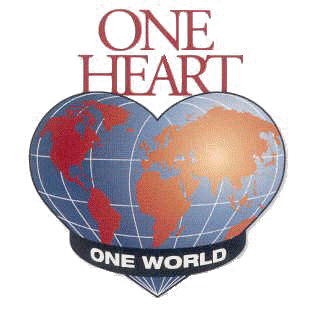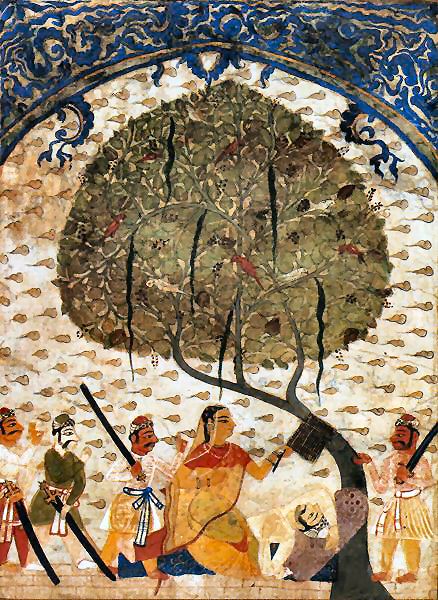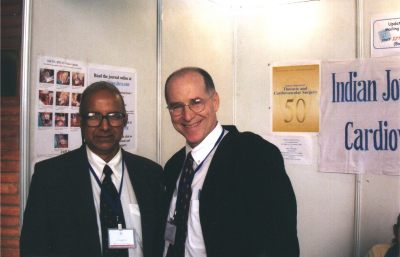
International
Children's Heart Fund
India
1995, 2004, 2007, 2008, 2010, 2012, 2016
information about India
 |
International |
|
India |
|
|
information about India |
Cardiac Surgery — India - November 1995
 Abstract
Abstract
This report follows a recent trip to India (11/17/95 through 11/30/95). Eight Cardiac Surgery Centers were visited in four major cities (Bombay, Madras, Calcutta, New Delhi). A comprehensive review of these facilities was undertaken in order to get a broad overview of the state of Cardiac Surgery in India today. In depth interviews with the leading cardiac surgeons were performed. Though not perfect, this overview is reasonably accurate though rapid changes are currently occurring with many new centers forming. As the economy grows, cardiac surgery will no doubt become increasingly available.
Introduction
This overview is written following a recent trip to India from 11/17/95 through 11/30/95. The itinerary involved Swiss Air from Boston to Zurich to Bombay. Bombay, Madras, Calcutta and Delhi involved India Airlines with return by Swiss Air from Delhi to Zurich to Boston. In all eight open-heart surgical centers (Table One) were visited in these four cities. Interviews with doctors and staff were obtained. The overall purpose of the trip was to gain objective information about the present status of cardiac surgery in India. The secondary intent was to learn as much about the history and present day life of the Indian people. A trip to Agra to view the Taj Mahal as well as personally meeting Mother Therese in Calcutta were notable highlights of the trip.
Present day India consists of approximately 1 billion people. Cardiac surgery involves less than 30,000 operations in less than 30 centers. Under 400 cardiac surgeons with MCH certificates perform the spectrum of cardiac surgery. Congenital, valvular, and coronary operations are all performed. Laser and transplant procedures were recently introduced.
Access to these sophisticated procedures is not organized. With less than 1% of the GNP going to health care the affluent pay directly for services with the hospital and physician fees individually negotiated. Limited third party programs, like the railroad health care system, exist. Indigent cases are seen at government hospitals with some attempt to gain the cost of disposables from the individual patient.
Needless to say, the demand for these services is great. An estimated 10 million people have documented coronary artery disease with an almost equal number of rheumatic valvular disease. With an annual increase in population of 70 million, well over 1 million patients with congenital heart problems are born per year.
Private hospitals and clinics are growing. Most are for profit with limited resources for the poor. Though frustrating, the quality and sophistication of cardiac surgery is certainly available. It will be some time before the number of centers and operations matches the annual need of the population at large.
|
Table One |
|
Bombay Hospital |
Cardiac Surgery — India - February, 2004
 At the 50th Annual Conference of the Indian
Association of Cardiovascular / Thoracic Surgery in New Delhi, February, 2004,
it was pleasing and gratifying to see the progress made in Cardiothoracic
Surgery over the past 9 years since my original visit. It is clear that
the political, economic, and social progress will affect the future quality and
quantity of surgery. An integral part of the growth will be modifying the
training programs for Cardiothoracic surgeons. Efforts in this area will
be one of the key areas for the future growth of Cardiac surgery and services in
India.
At the 50th Annual Conference of the Indian
Association of Cardiovascular / Thoracic Surgery in New Delhi, February, 2004,
it was pleasing and gratifying to see the progress made in Cardiothoracic
Surgery over the past 9 years since my original visit. It is clear that
the political, economic, and social progress will affect the future quality and
quantity of surgery. An integral part of the growth will be modifying the
training programs for Cardiothoracic surgeons. Efforts in this area will
be one of the key areas for the future growth of Cardiac surgery and services in
India.
At the present time over 2,000 cardiac surgeons perform over 80,000 open heart operation in more than 170 centers throughout India. The average cost of open heart surgery is less than $5,000USD. Over 50% of coronary bypass operations are done off bypass (OPCAB). Well over 2.5 million Indians are in need of cardiac surgery. More than 150,000 children per year are born in India with congenital heart disease.
Cardiac Surgery - India, 2007
In January, 2007 Dr Pezzella in collaboration with the World Heart Foundation, , went to Chennai (Madras), India for three months to work with Dr K. M. Cherian, a noted pediatric cardiac surgeon. The goal was to get added insight into the growth and development of cardiac surgery in India. Particular attention was given to current training systems for cardiothoracic surgery.
On Location-India, May 2007
A vibrant country,
Recent educational spending is
4.1% of GDP and health care spending is 4.8% of
The health care system / structure of India is predominantly socialized at the central, state, and district levels, but is changing rapidly with the emergence of free market privatization of health care services. As of 1992, there were 22,400 primary care centers, 7,300 acute care hospitals (4,000 governmental, 2,000 charitable trust, and 1,300 private) (3). There were more than 320,000 doctors or 3/10,000 population, 220,000 nurses, and over 130 medical schools or colleges, including both public and private.
As with most emerging economies,
there is a double burden of disease in
Traditional medicine is the oldest Indian science. It is rooted in yoga practices that stress a holistic approach to health that is based on proper diet and exercise (5). Dating back to the 6th century B.C., this ancient system of Indian medicine is known as Ayurveda, or the science of longevity and life. It is still widely practiced, and gaining in world-wide popularity.
With the colonization and
domination of
Presently there are more than 50 training programs with about 60 residents completing training per year. Over 1,000 CT surgeons perform cardiothoracic surgery in over 175 centers. The annual caseload for cardiac surgery is between 70 and 80 thousand, of which > 60% are coronary artery operations. The annual caseload has doubled since 1995. This increase is directly proportional to the emergence of the increased out-of-pocket paying population (7, 8).
The notable
advance in centers, caseloads, number of trained CT surgeons, increasing
basic/clinical research, and indigenous design / manufacture of medical
equipment/supplies is offset and challenged by the awareness and concerns of
cost, access, waiting lists, quality of training, academic progress, and human
subject clinical research. A better understanding and appreciation of these
issues was gained during a 3-month stay in
Figure 1
at the
Frontier Lifeline
Cardiovascular Centre in Chennai. The activities included participating in the
First International Rural Cardiac Care Conference in Parumala,
These concerns, observations, and recommendations can be summarized:
1. Cardiac surgery growth favors India, given that 10-20% are middle income by western standards, and have access to a number of outstanding state of the art centers e.g. ESCORTS, Apollo, Fortis, Frontier Lifeline).
2. Unfortunately, valve and congenital heart
disease lags behind coronary disease. The waiting lists for the former continue
to rise, especially in the government hospitals. Fewer than 10 centers perform
complex congenital procedures, yet the results are excellent in those centers.
An estimated 6 million Indians are in need of cardiac surgery (42 operations /
million in
3. Existing centers from all sectors have not developed a consensus for strategies to address the alleviation of this burden of disease.
4. The training programs, though organized and structured, suffer from imbalance, with only a few centers producing well rounded experienced responsible trainees ready to operate / practice on completion of their training, e.g. All India Institute of Medical Sciences.
5. Research has advanced remarkably especially in stem cell / tissue engineering, minimally invasive surgery, and advanced devices, including robotics.
6.
7. The role of foreign help or participation
in
Dr AS Kumar (10) has nicely summarized the 2
major needs for cardiac surgery in
Collaboration and cooperation with our Indian colleagues must be based on a desire and willingness to listen to their wants and needs. They have more insight into their own country. We can learn from them. The excitement, enthusiasm, and desire to extend cardiothoracic surgical services are a joy to observe. Needless to say, the explosive growth of CT surgery will parallel the social / political / economic growth.
References
In September, 2016 another visit
to Frontier Lifeline in Chennai, India was made. The goals were to assist with
procurement of cardiac surgery equipment from International Aid in Spring Lake,
Michigan. Assisting with several clinical papers was also done. Finally, helping
develop a 3 month visit of a perfusionist and 2 cardiac surgery ICU nurses from
Papua New Guinea (PNG) was accomplished. Dr KM Cherian continues to support
donated clinical care for patients from both India and regional countries, as
well as providing “hands-on” education and training from developing programs.
Other recent projects are being developed in Nigeria, South India, and Myanmar.